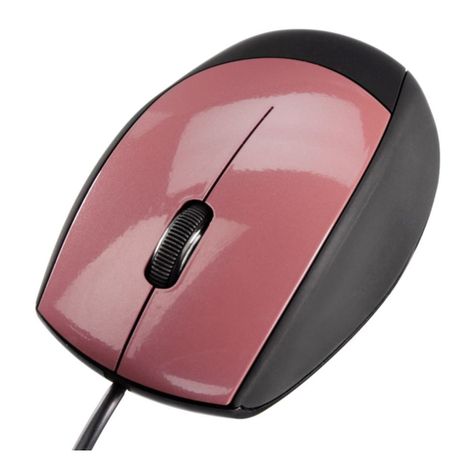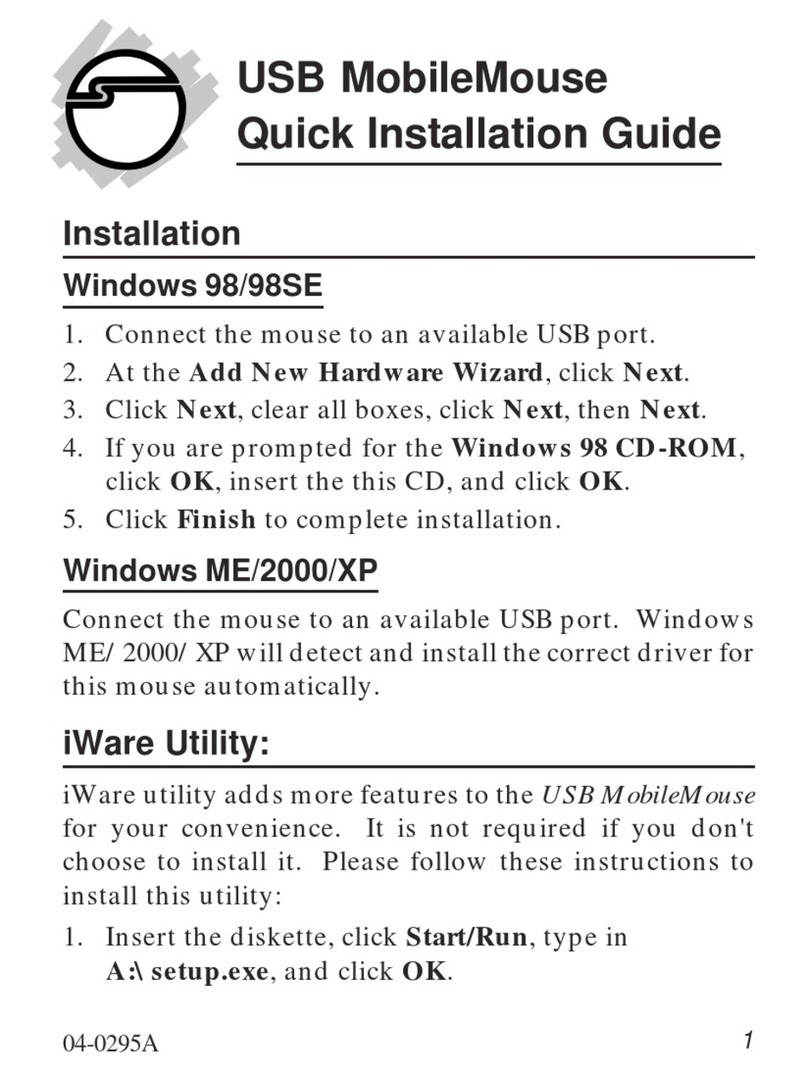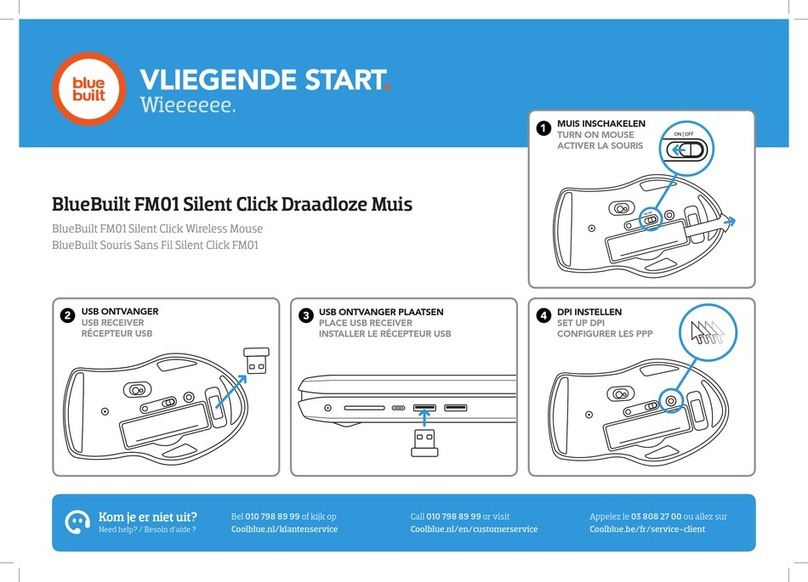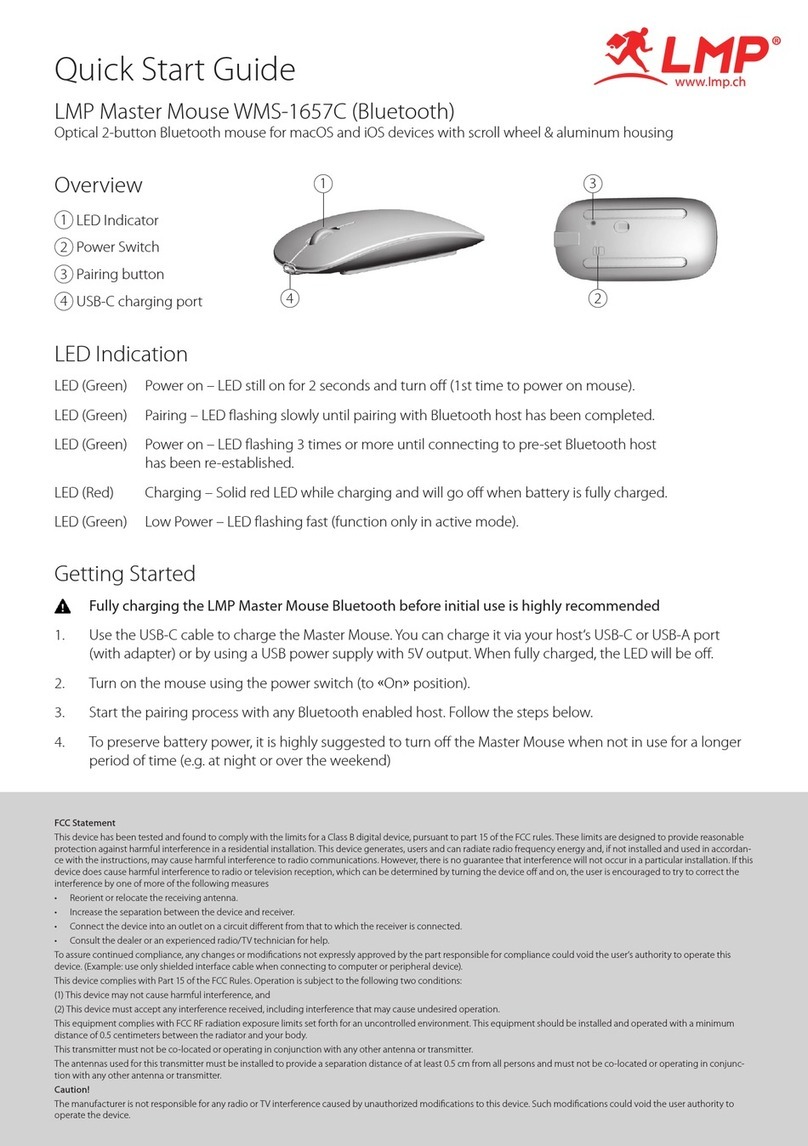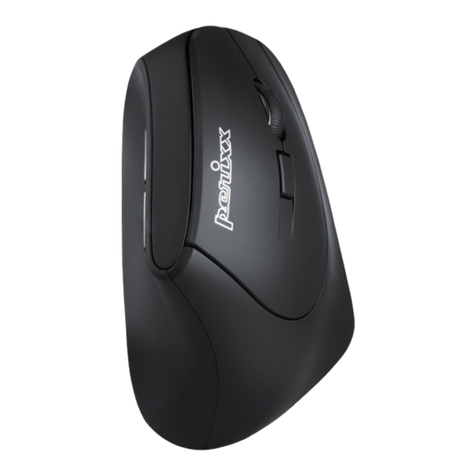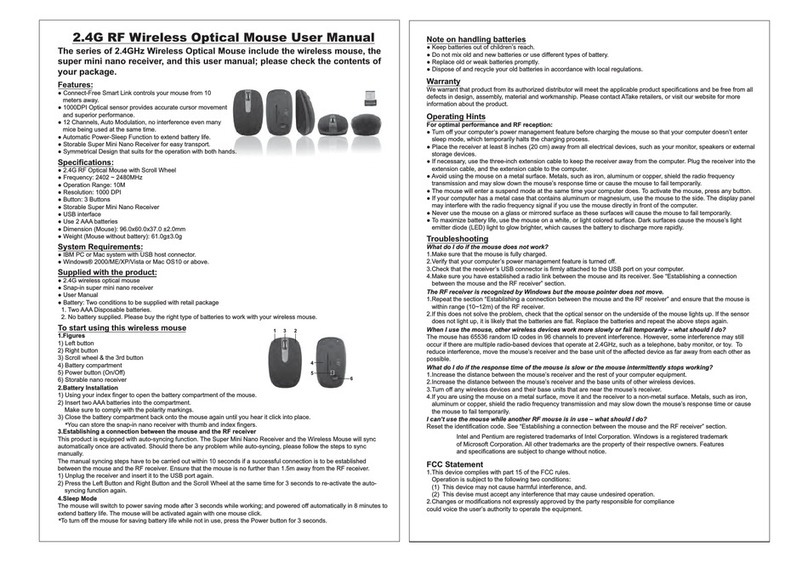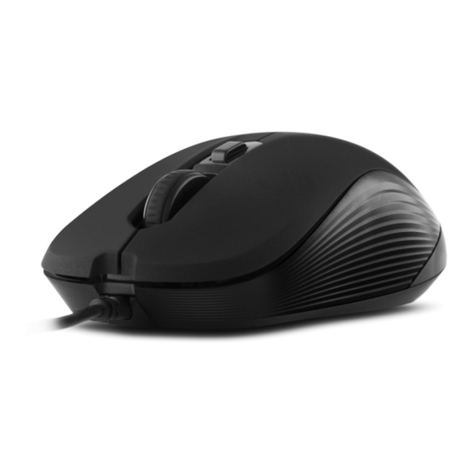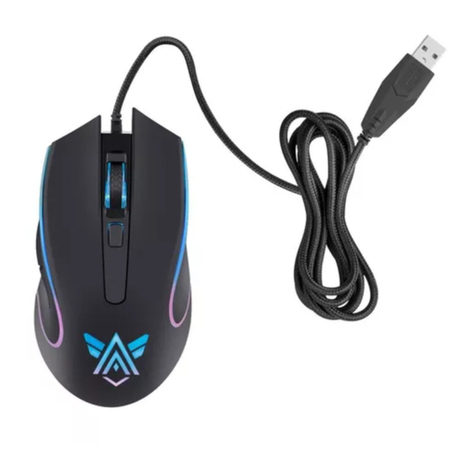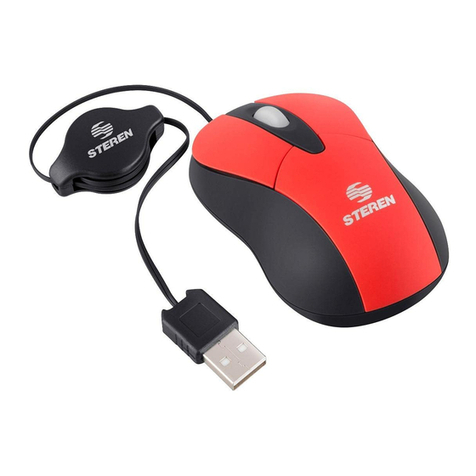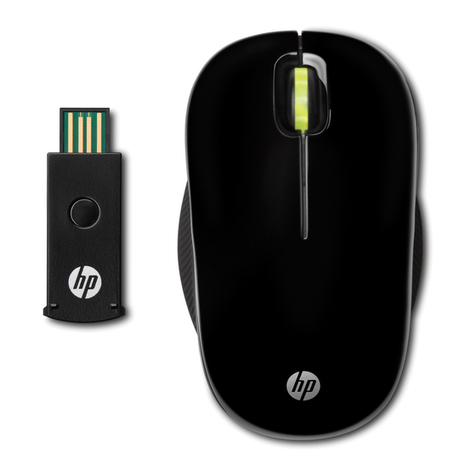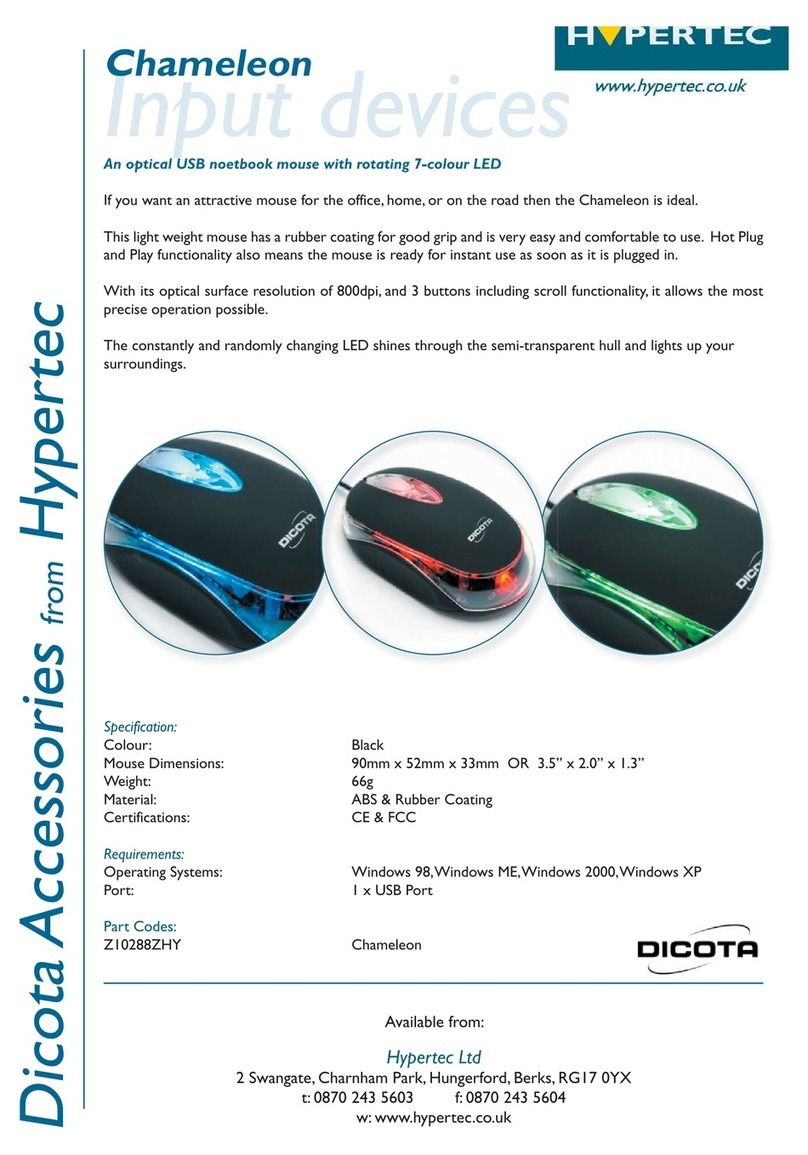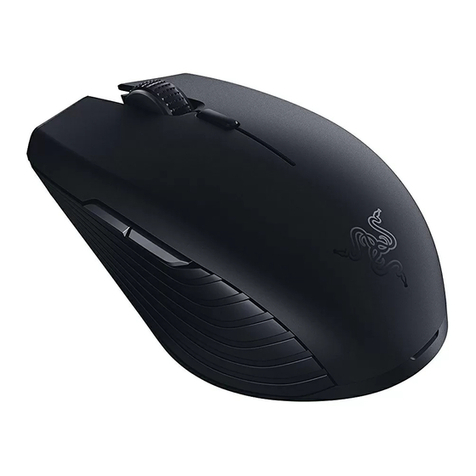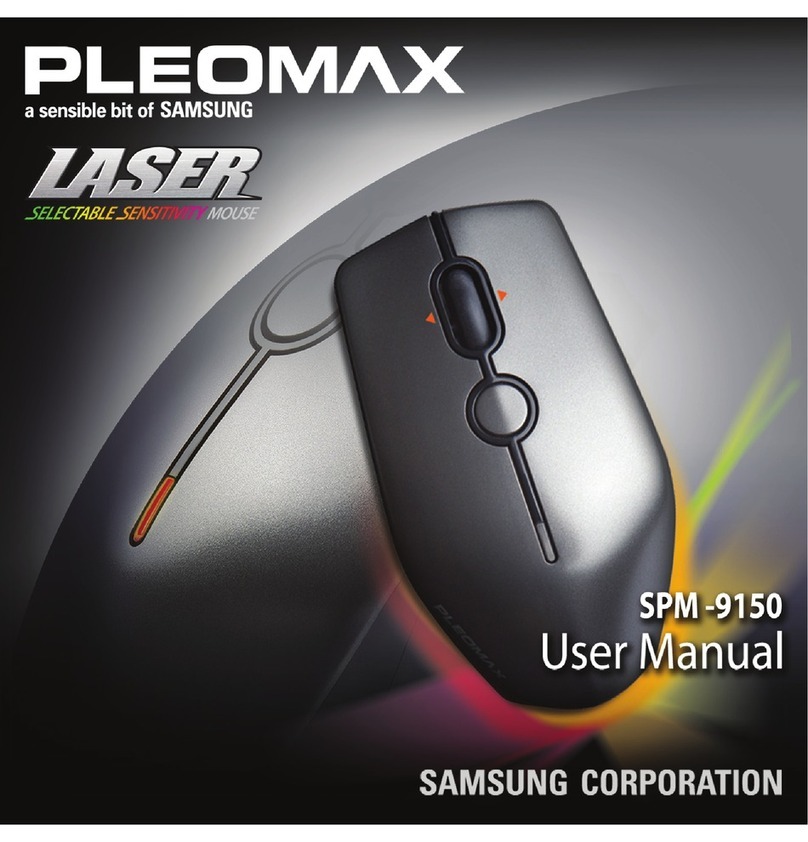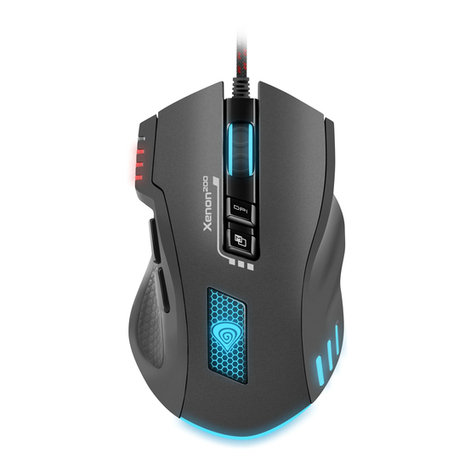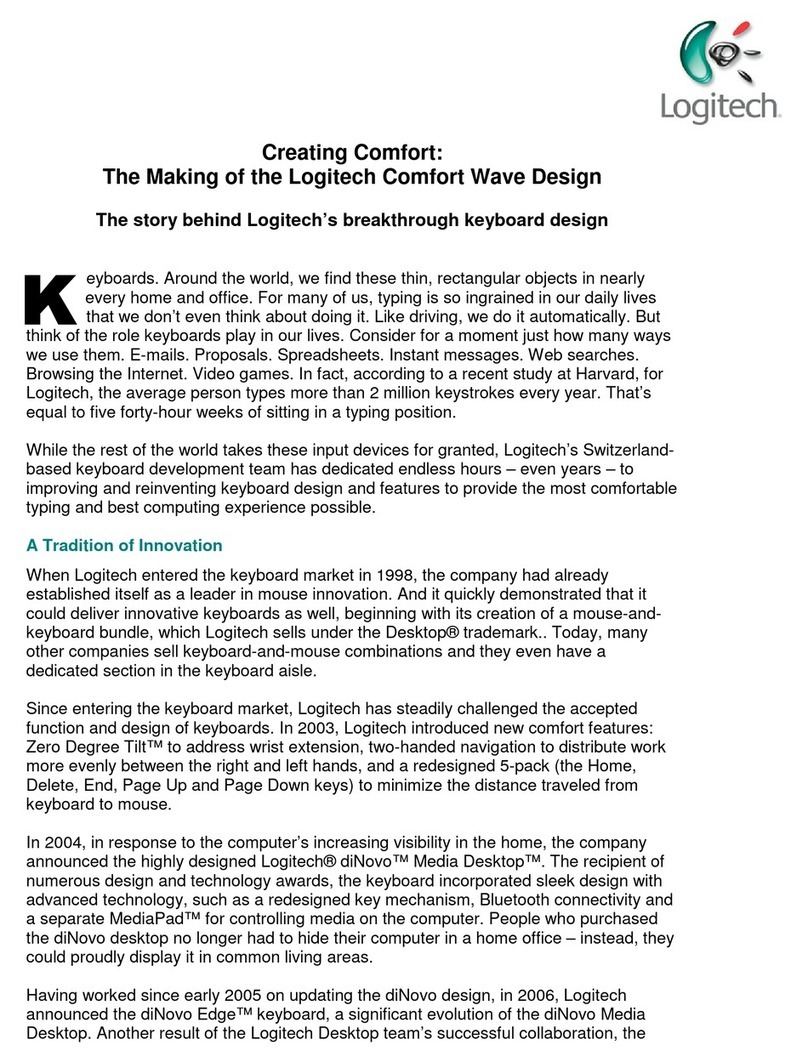Deister electronic UDL5 User manual

UDL5 – UHF mouse
Quick start manual
V27/09/07

© Copyright 2007 y deister electronic Gm H
All rights reserved. No part of this publication may be reproduced, stored in a retrieval
system, or transmitted, in any form or by any means, electronic, mechanical, photocopying,
recording, or other ise, ithout prior ritten permission of deister electronic GmbH.
deister electronic GmbH reserves the right to make changes to any and all parts of this
documentation ithout obligation to notify any person or entity of such changes.
September 2007 SK
deister electronic GmbH
Hermann-Bahlsen Str. 11
30890 Barsinghausen
Germany
Phone: +49 (0) 51 05 - 51 61 11
Fax: +49 (0) 51 05 - 51 62 17
E-Mail: [email protected]
Web: .deister.com
2deister electronic GmbH 30890 Barsinghausen Germany V27/09/07
UDL5 - UHF mouse · Quick start manual

Content
1. UDL5 description.........................................................4
1.1 Components.......................................................................................................4
2. Mechanical Dimensions..............................................4
2.1 LEDs and Beeper.................................................................................................5
3. Configuration and setting...........................................5
3.1 Transmission protocol..........................................................................................5
4. Getting started............................................................6
4.1 Installing USB driver............................................................................................6
4.2 Installing RDemo...............................................................................................10
4.3 Get connection.................................................................................................10
4.4 Reading block data...........................................................................................14
4.5 Writing block data.............................................................................................15
4.6 EPC class1 gen2 tag functions............................................................................16
4.7 RDemo command builder..................................................................................16
5. EPC class1 gen2 memory organisation.....................17
V27/09/07 deister electronic GmbH 30890 Barsinghausen Germany 3
UDL5 - UHF mouse · Quick start manual

1. UDL5 description
1.1 Components
The UDL5 delivery contains:
•1x UDL5 – UHF mouse
•1x USB cable
•1x CD ith technical information and soft are
2. Mechanical Dimensions
All dimensions in mm (inch).
Symbol LED color Status
Xred RF-field on/off
√green reading/ riting tags
blue po er
Further explanation see next section 2.1 „LEDs and Beeper“.
4deister electronic GmbH 30890 Barsinghausen Germany V27/09/07
UDL5 - UHF mouse · Quick start manual

2.1 LEDs and Beeper
The device is equipped ith three LEDs and one beeper to indicate the reader status. The
follo ing table refers to the standard settings (device set in trigger mode).
LEDs Status UDL5
blue and red: on
green: off
reader is ready to operate, RF-field is s itched off
blue: on
red and green: off
reader is ready to operate, RF-field is s itched on,
reader is ready to read or rite to transponder
blue and green: on
red: off
beeper: on
reader is ready to operate, communication bet een
reader and tag (reading/ riting)
blue, green and red: on reader carries out a reset, RF-field is s itched off,
reader is not ready to operate
3. Configuration and setting
Please note: This manual is considered to e prelimiary.
In the standard configuration the device is set in “Trigger Mode“. This means the device aits
for a “Trigger On“ command to s itch the RF-field on and a „Trigger Off“ command to s itch
the RF-field off. These soft are commands can be sent to the device using RDemo soft are (to
be found on the CD hich is part of the UDL5 package).
The UDL5 in its current version is EPC class1 gen2 complicant only.
3.1 Transmission protocol
The communication of the UDL5 is based on the “deBus” protocol. For integration into user-
defined applications please contact your local sales and service center (see end of document).
V27/09/07 deister electronic GmbH 30890 Barsinghausen Germany 5
UDL5 - UHF mouse · Quick start manual

4. Getting started
4.1 Installing USB driver
First the USB driver has to be installed. The follo ing steps sho ho to install the driver
under Windo s XP (Windo s Vista is supported as ell):
•Connect the UDL5 via USB cable to a spare USB Port at your Host/PC
(USB cable as part of delivery of UDL5).
•Windo s XP indicates the ne hard are ith the message
“Found Ne Hard are: HARVEMAC“.
•The “Found Ne Hard are Wizard“ ill no be started automatically.
Select “No, not this time“ and click “Next“.
If this procedure failed, the search for ne hard are can be started manually by click on:
“Start“ -> “Settings“ -> “Control Panel“ -> “System“ -> “Hard are“ -> “Device
Manager“. Select the USB device, marked by a yello question mark.
6deister electronic GmbH 30890 Barsinghausen Germany V27/09/07
UDL5 - UHF mouse · Quick start manual

•Select “Install from a list or specific location (Advanced)“ and click “Next“.
•Select “Search for the best driver in these locations“. Enter path name into the combo-
box or bro se to path using the “Bro se“ button.
V27/09/07 deister electronic GmbH 30890 Barsinghausen Germany 7
UDL5 - UHF mouse · Quick start manual

•The screen belo ill be sho n hile Windo s XP copies the required files.
•The follo ing message indicates a successful installation process. Click “Finish“ to
close the izard. No the UDL5 is successfully installed.
8deister electronic GmbH 30890 Barsinghausen Germany V27/09/07
UDL5 - UHF mouse · Quick start manual

•After successful installation of the USB driver, the UDL5 is ready for use. The “Device
Manager“ indicates the UDL5 as an additional device named “UsbHarve.Sys for Intel
Harve RFID MAC“.
V27/09/07 deister electronic GmbH 30890 Barsinghausen Germany 9
UDL5 - UHF mouse · Quick start manual

4.2 Installing RDemo
The RDemo program can be found on the CD as part of the UDL5 package. For installation
proceed as follo s:
•Start installing RDemo ith double click on file or icon:
4.3 Get connection
•After successfull installation of RDemo start the program ith double click
on file or icon:
•Select “Port“ -> “USB“.
10 deister electronic GmbH 30890 Barsinghausen Germany V27/09/07
UDL5 - UHF mouse · Quick start manual

•Click on button “deBus“.
•Select “baud rate: all“ and click “Detect Device(s)“.
•RDemo starts scanning for connected deBus devices.
V27/09/07 deister electronic GmbH 30890 Barsinghausen Germany 11
UDL5 - UHF mouse · Quick start manual

•After successful search the UDL5 ill be sho n as a detected device.
•Select the UDL5 ith click on the left mouse button, then click “Set As Current Device“
and close the indo .
12 deister electronic GmbH 30890 Barsinghausen Germany V27/09/07
UDL5 - UHF mouse · Quick start manual

•Click on the “Version“ button. A “version received“ message in the bottom state bar
indicates a successful version request of the UDL5.
•Click on the “Trigger On“ button in order to s itch on the RF-field. Present an EPC
class1 gen2 tag in front of the reader and RDemo ill display the tag read.
•Click on the „Trigger Off“ button in order to s itch off the RF-field.
V27/09/07 deister electronic GmbH 30890 Barsinghausen Germany 13
UDL5 - UHF mouse · Quick start manual

4.4 Reading lock data
The reading function “Transponder“ -> “Read“ can be used to read block data of an EPC
class1 gen2 transponder. To do so proceed as follo s:
•Choose the tag type (please note: The current UDL5 version supports EPC class1 gen2
tags only), the serial number (EPC) of the tag to be read and one of the predefined
memory blocks.
•Click on the “Read!“ button and present the EPC class1 gen2 tag ithin the RF-field.
The block data ill be sho n in the „Transponder data“ indo (see belo ).
For more details concerning EPC class1 gen2 tag memory organisation see section
5. “EPC class1 gen2 memory organisation“.
14 deister electronic GmbH 30890 Barsinghausen Germany V27/09/07
UDL5 - UHF mouse · Quick start manual

4.5 Writing lock data
The riting function “Transponder“ -> “Write“ can be used to rite block data to an EPC
class1 gen2 transponder. To do so proceed as follo s:
•Choose a tag type (please note: The current UDL5 version supports EPC class1 gen2
tags only), the serial number (EPC) of the tag, a predefined memory section and the
data to be ritten.
•Click on the “Write!“ button and present the EPC class1 gen2 tag ithin the RF-field.
The block data ill be sho n in the “Monitor“ indo . RDemo indicates successful
riting ith a “ rite successful“ message (in the “Monitor“ bottom state bar, see
belo ).
For more details concerning EPC class1 gen2 tag memory organisation see section
5. “EPC class1 gen2 memory organisation“.
V27/09/07 deister electronic GmbH 30890 Barsinghausen Germany 15
UDL5 - UHF mouse · Quick start manual

4.6 EPC class1 gen2 tag functions
Additional tag functions like “Kill command“ and all others are not supported by the
current version of UDL5. Please consult the next sales and service center for details.
4.7 RDemo command uilder
For sending a user-defined deBus command to the UDL5, the “Command Builder“ is a
useful tool.
•Go to “Special Functions“ and select “Command Builder“.
•Enter a user-defined deBus command string ithout dummy bytes, CRC and STOP
bytes and then click “send command“.
16 deister electronic GmbH 30890 Barsinghausen Germany V27/09/07
UDL5 - UHF mouse · Quick start manual

5. EPC class1 gen2 memory organisation
This paragraph refers to the document “EPCglobal™, Specification for RFID Air Interface”,
Version 1.0.9.
The tag memory is divided into four memory banks. Each memory bank consists of several
blocks, each block has the size of 2 bytes. The banks RESERVED, EPC and TID must al ays
be available, the USER bank is optional.
•RESERVED: Non-Volatile-Memory, this memory contains a 32 bit Kill Pass ord and a
32 bit Access Pass ord.
•EPC (Electronic Product Code): This bank contains the CRC-16 (cyclic redundancy
check), PC (Protocol Control) and EPC. The PC bits contain information about the tag,
e.g. length of the EPC. The EPC begins at block address 66 (dec), MSB first. In case of
a 96 bit EPC it has the size of 6 blocks.
•TID (Transponder Identification): The TID memory contains data about the
manufacturer. Tags may contain specific data ithin the TID memory, beginning at
block address 130 (dec), e.g. a tag serial number.
•USER: allo s user specific data storage. The memory organisation is user-defined.
V27/09/07 deister electronic GmbH 30890 Barsinghausen Germany 17
UDL5 - UHF mouse · Quick start manual
3 USER
[15:0]
… …
…
[N:N-15] [0:15] 192
2 TID
… … …
TID [15:0] [16:31] 129
TID [31:16] [0:15] 128
1 EPC
EPC [15:0]
… …
…
EPC [N:N-15] [32:47] 66
PC [15:0] [16:31] 65
CRC-16 [15:0] [0:15] 64
0 RESERVED
… … …
Access Pass ord [15:0] [48:63] 3
Access Pass ord [31:16] [32:47] 2
Kill Pass ord [15:0] [16:31] 1
Kill Pass ord [31:16] [0:15] 0
Bank No.
(decimal form)
Bank
Name
Block Memory Content
[MSB:LSB]
(decimal form)
Memory Bank
Addresses
[MSB:LSB] (decimal
form)
Block Address
(decimal form)

6. Regulatory notices
6.1 Europe
Hereby, deister electronic GmbH declares, that this equipment - if used according to the
instructions - is in compliance ith the essential requirements and other relevant provisions
of the RTTE Directive 1999/5/EC.
A full declaration of conformity can e requested at:
info@deister-gm h.de
Approved for use in all European countries.
6.2 FCC Digital Device Limitations
Radio and Television Interference
This equipment has been tested and found to comply ith the limits for a digital device,
pursuant to Part 15 of the FCC rules. These limits are designed to provide reasonable
protection against harmful interference hen the equipment is operated in a commercial
environment. This equipment generates, uses and can radiate radio frequency energy and,
if not installed and used in accordance ith the instruction manual, may cause harmful
interference to radio communications. Operation of this equipment in a residential area is
likely to cause harmful interference, in hich case the user ill be required to correct the
interference at his o n expense.
This device complies ith Part 15 of the FCC rules. Operation is subject to the follo ing
t o conditions: (1) This device may not cause harmful interference, and (2) this device
must accept any interference received, including interference that may cause undesired
operation.
In order to maintain compliance ith FCC regulations, shielded cables must be used ith
this equipment. Operation ith non-approved equipment or unshielded cables is likely to
result in interference to radio and television reception.
Caution! Changes or modifications not expressly approved by the manufacturer could void
the user´s authority to operate this equipment.
18 deister electronic GmbH 30890 Barsinghausen Germany V27/09/07
UDL5 - UHF mouse · Quick start manual

Notes:
V27/09/07 deister electronic GmbH 30890 Barsinghausen Germany 19
UDL5 - UHF mouse · Quick start manual

Notes:
20 deister electronic GmbH 30890 Barsinghausen Germany V27/09/07
UDL5 - UHF mouse · Quick start manual
Table of contents
